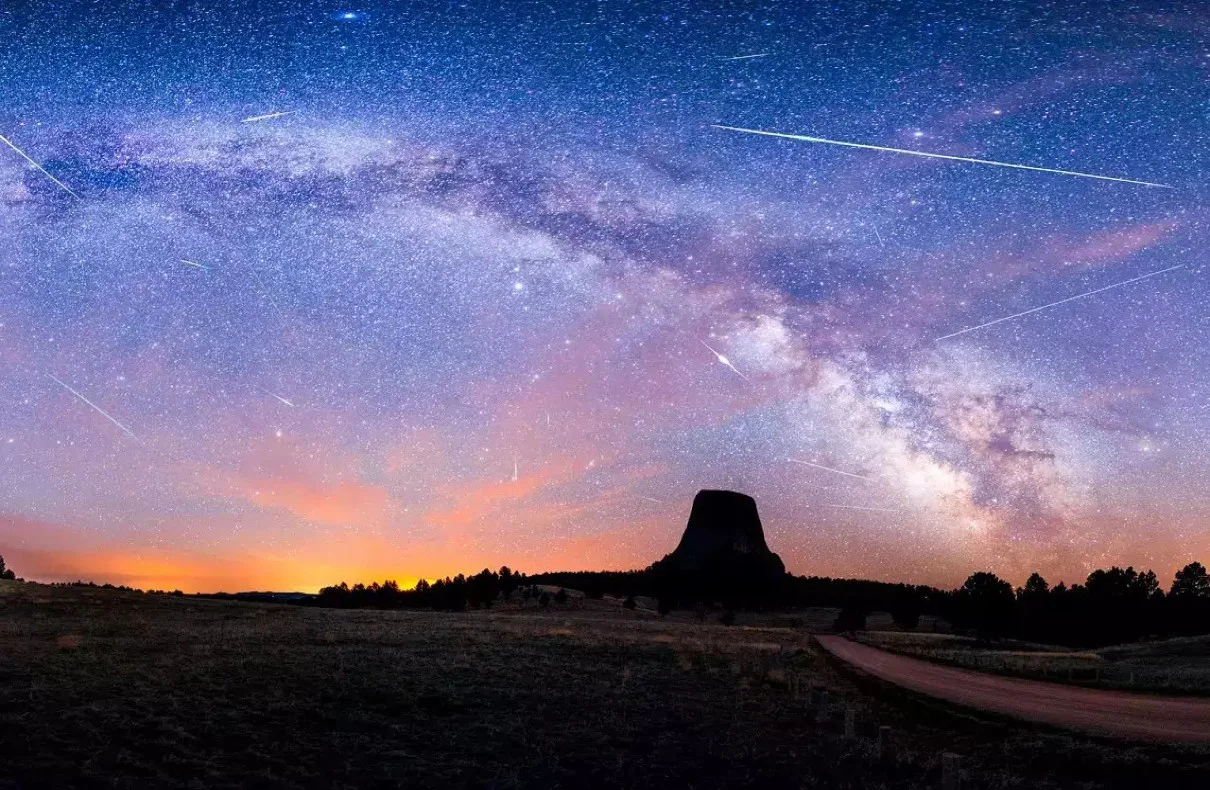As the warmth of spring envelops the Earth, the night sky prepares to put on a dazzling display. May heralds the arrival of the highly anticipated Eta Aquariids meteor shower, a celestial event that promises to captivate stargazers and astronomy enthusiasts alike. This annual celestial spectacle, which graces our skies with its mesmerizing streaks of light, is a testament to the wonders of the cosmos and a reminder of the awe-inspiring beauty that lies beyond our planet.
The Eta Aquariids meteor shower owes its existence to the renowned Halley’s Comet, a celestial wanderer that has been captivating humans for centuries. As this comet journeys through the solar system, it leaves behind a trail of cosmic debris, consisting of tiny particles of dust and ice. When our planet crosses this debris field, these particles collide with Earth’s atmosphere, creating the breathtaking display of shooting stars that we know as the Eta Aquariids.
The Eta Aquariids meteor shower reaches its peak around May 5th each year, offering stargazers a prime opportunity to witness this cosmic spectacle. However, the shower’s broad peak extends for several days before and after this date, providing ample chances to catch a glimpse of the celestial fireworks.
During the peak, observers can expect to see up to 30 meteors per hour streaking across the night sky, with the best viewing conditions occurring in the early morning hours before dawn. These meteors, which appear to originate from the constellation Aquarius, can be seen in all parts of the sky, making this event a truly global phenomenon.
To fully appreciate the beauty of the Eta Aquariids meteor shower, stargazers should plan their viewing experience carefully. Here are some tips to enhance your celestial encounter:
- Choose a Dark Location: Light pollution can significantly diminish the visibility of meteors. Seek out areas away from city lights, such as rural locations or dark parks, to maximize your chances of witnessing the celestial display.
- Dress Warmly: Early morning hours can be chilly, especially in the spring. Dress in layers and bring a comfortable chair or blanket to ensure a comfortable viewing experience.
- Allow Your Eyes to Adjust: Give your eyes ample time to adapt to the darkness, typically 20-30 minutes. This will enhance your night vision and allow you to spot even the faintest meteors.
- Be Patient: Meteor showers can be unpredictable, with bursts of activity followed by lulls. Patience and perseverance are key to catching the most spectacular moments.
The Eta Aquariids meteor shower is more than just a celestial display; it’s a celebration of our connection to the cosmos. As you gaze up at the night sky, witnessing the streaks of light that have journeyed across the vastness of space, you’ll be reminded of the incredible wonders that exist beyond our planet and the mysteries that still await exploration.
